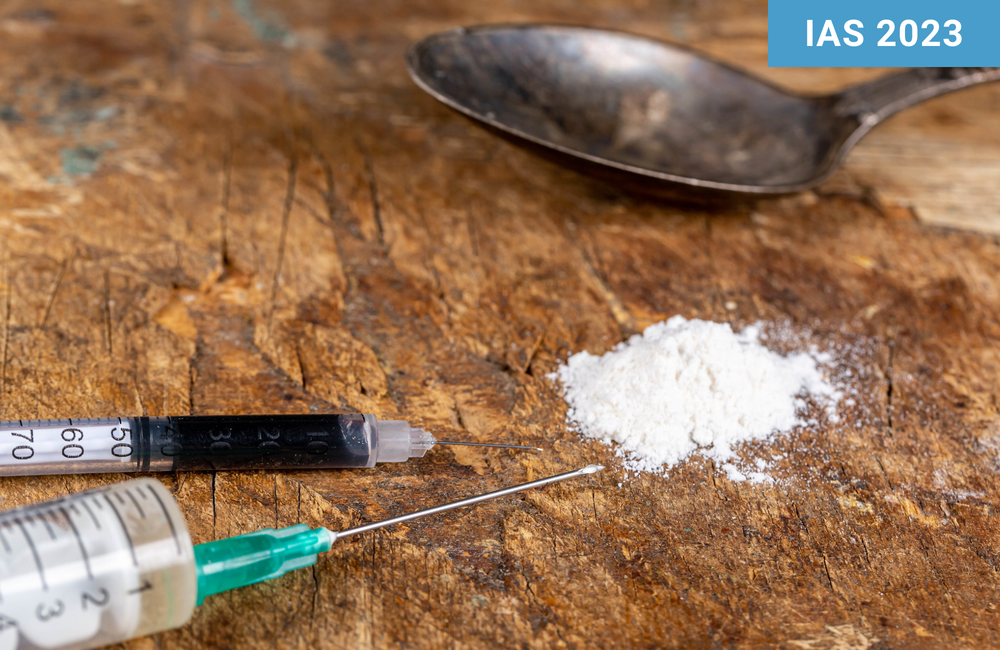
Nearly 14% of people who inject drugs in South Africa went on to acquire HIV in a national sample of people seeking harm reduction services, according to research presented to the 12th International AIDS Society Conference on HIV Science (IAS 2023) in Brisbane, Australia by Dr Adeline Artenie from the University of Bristol.
However, Artenie pointed out that services such as needle and syringe programmes and opioid substitution therapy have the potential to reduce this incidence rate. This research underscores the urgent need for increased funding for these services in the country.
Background
Despite having the largest HIV epidemic globally, the rate of new cases of HIV among people who inject drugs has never been measured in South Africa. Artenie recently conducted a systematic review and meta-analysis which identified only one African study (from Kenya) estimating HIV incidence among people who inject drugs. Globally, incidence in high-income countries was 0.9%, whereas it was 3.2% in low- and middle-income countries.
In South Africa, the proportion of people who inject drugs who are living with HIV (prevalence) is estimated to be 18%. Harm reduction services in the form of needle and syringe programmes became available in 2015, starting in Cape Town.
While opioid substitution therapy – the use of methadone and buprenorphine to manage withdrawal and cravings for drugs such as heroin – has been available since 2017 in the country, it is estimated that less than 5% of those who need it currently get it due to the high cost of these treatments. Poverty is a key barrier to accessing this type of treatment; around two-thirds of those who inject drugs in South Africa are homeless.
The study
Artenie used programmatic data from harm-reduction sites in four South African provinces (Gauteng, KwaZulu-Natal, the Eastern and Western Cape) collected between 2019 and 2022 to estimate new cases of HIV among people who inject drugs.
These sites are operated by the Networking HIV and AIDS Community of Southern Africa (NACOSA). They offer a mix of interventions aimed at people who inject drugs, including HIV testing every six weeks for those who are HIV-negative. They also offer limited opioid substitution therapy in the larger cities of Johannesburg, Cape Town and eThekwini.
From 31,873 people who inject drugs across the four provinces, most were excluded from further analysis because they were known to be living with HIV, weren’t tested for HIV or were only tested once. HIV incidence was calculated in a sample of 2457 people who were HIV-negative initially. Of this sample, most were from Gauteng (57%), men (90%), Black (72%), had a median age of 30 (77% were 35 or younger), were homeless or unstably housed (63%) and used heroin (97%). Gauteng had the highest percentage of people who only used heroin (84%), while the Western Cape had a high percentage of use of both heroin and stimulants (69%). Overall, very few people had received opioid substitution therapy – this ranged from low numbers such as none or 0.5% in the Eastern Cape and Johannesburg respectively, to a high of 6.4% in the Western Cape.
HIV incidence
A total of 300 people acquired HIV over a period of 2190 person-years, resulting in an HIV incidence rate of 13.7% (95% confidence interval: 12.2-15.3). Risk of HIV acquisition varied by province, with Gauteng having the highest incidence (19%), followed by KwaZulu-Natal (17%). Incidence was lower in the Eastern Cape (6.3%) and Western Cape (3.4%). Younger age groups tended to have higher incidence rates than those aged over 35.
People who had received opioid substitution therapy and a greater number of harm-reduction packs had lower risks of HIV acquisition. Those who received opioid substitution therapy after being tested for HIV had a 62% reduction in the chances of contracting HIV compared to those who had never received substitution therapy (adjusted hazard ratio 0.38, 95% confidence interval 0.18-0.81).
Conclusion
“After adjusting for differences in the sociodemographic profiles of people who inject drugs, province remained one of the most important factors associated with different levels of HIV risk. HIV incidence was approximately three times higher in Gauteng and KwaZulu-Natal than in the Eastern and Western Cape,” Dr Artenie concluded. “Opioid substitution therapy seemed to reduce the risk of HIV acquisition, emphasising the importance of urgently expanding access to it.”
Artenie A et al. Characterising HIV incidence among people who inject drugs engaged with harm-reduction programs in four provinces in South Africa. 12th IAS Conference on HIV Science (IAS 2023), Brisbane, abstract OAC0103, 2023.
View the abstract on the conference website.
Full image credit: Two syringes, powder and spoon on old wooden background. Image by Marco Verch. Available at https://foto.wuestenigel.com/two-syringes-powder-and-spoon-on-old-wooden-background/ under a Creative Commons licence CC BY 2.0.
